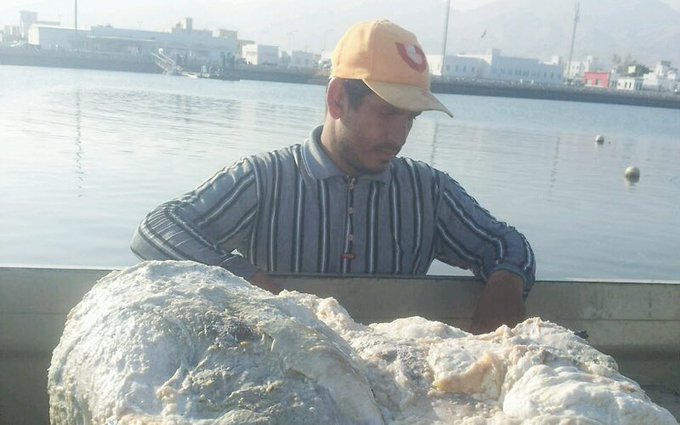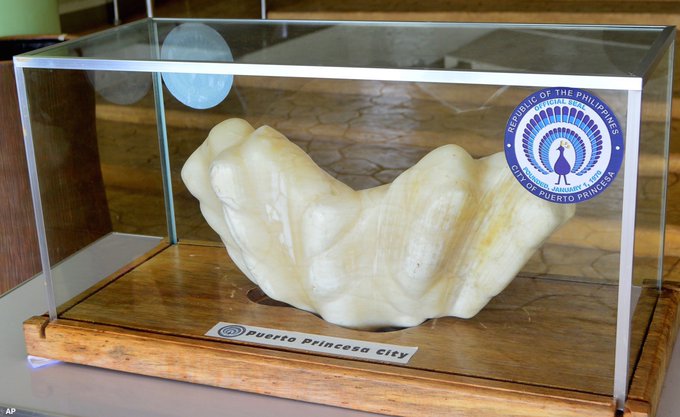Valuable Treasures People Found In Nature

May 27, 2023
•12 min read
There are lots of valuable treasures you can find just lying around in nature. Let's find out about the most valuable treasures you can easily spot in nature!
From pearls to gold nuggets and even billion-year-old meteorites, nature is full of intriguing items that can instantly make you a fortune. Countless people have devoted their lives to trying to find these sorts of items, while others have simply stumbled upon them by accident. Let’s explore some of the most valuable treasures people found in nature, and see how you could do the same!
Queensland Sapphire
In 2018, a man from Queensland, Australia found a 141-carat sapphire, while walking along, kicking pebbles. Queensland has the largest sapphire fields in the southern hemisphere, including the one the man was wandering through at the time, so his chances were naturally slightly improved.
Regardless, experts estimate that the little stone could fetch at least $23,000, should its finder choose to sell it. If sapphires pique your interest, they’re typically found along the bedrock of areas that were rivers millions of years ago, which once carried the gems from their volcanic birthplaces.The Australian sapphire fields contain unusually high concentrations of gems, but Montana, USA is also known for its reserves. Choosing a spot, digging down to the bedrock and outward in tunnels is the way to go if you’re seeking the biggest gems. It isn’t easy; you’ll need some expensive equipment and to stake an official claim, but it could make you a fortune. For a more casual experience, small sapphires can also be found in riverbeds of sapphire-rich regions by pan-filtering the gravel. Like many gems, a sapphire’s price varies from 20 bucks to thousands of dollars depending on size, shape and color, but it’s certainly worth a try!Golden Nuggets
A family from Victoria, Australia literally struck gold in 2019 when their daughter accidentally kicked a nugget while walking on the outskirts of town. Her father’s heart skipped a beat seconds later when he heard, “dad, is this gold?” The unbelievable chance discovery, weighing 21 ounces, could fetch them upwards of $25,000 if they sell it.

Lizzie the Lizard
For centuries, fossils have provided humans with incredible insight into Earth’s history. And for a lucky few, fossils have provided a handsome fortune, too. In 1988, fossil hunter Stan Wood unearthed the fossilized remains of one of the earliest relatives of amphibians and reptiles in a Limestone quarry in West Lothian, Scotland.
Dating back 338 million years, the fossil became known as ‘Lizzie the Lizard’, and eventually found a new home at the National Museum of Scotland. The sale made Mr. Wood a cool $250,000. While not every fossil will fetch you quite this much, it’s certainly worth keeping your eyes open for anything that looks a little "scaly" the next time you’re in rocky surroundings.Small, common fossils may fetch from $5-10, while larger, rarer and more complete specimens can range from the hundreds to the millions of dollars. Almost all fossils are found in sedimentary rocks like sandstone, limestone and shale, most commonly in places that were once (or still are) rivers or sea beds. To identify a fossil, look for grained surfaces and lots of small holes, which indicate bone and blood vessels.Be careful when removing a fossil, as there may be other parts that were once connected to it in the area nearby. The more of the creature you can find, the more valuable it is! Use geological maps to seek out rocks from the Triassic, Jurassic or Cretaceous periods if dinosaurs are what you seek, then grab a hammer and chisel, and get digging!Fukang Meteorite
This 1-ton meteorite was discovered in 2000 by a hiker traveling near the mountains of Fukang in China. Since then, it’s been divided up into chunks, some of which can actually be found on eBay!
Amazingly, the Fukang Meteorite is estimated to be 4.5 billion years old–around the same age as the Earth itself. When cut into chunks, the translucent crystals which give the meteorite its ethereal glow can be seen clearly, thanks to the mineral ‘olivine’, found within the meteorite.Planggenstock Treasure
In 1993, mountain explorer Paul von Kanel discovered a collection of fluorite crystals in a small crevasse in the Planggenstock mountains of the Swiss Alps. Convinced there were more crystals to be found, he excavated for another decade with a companion, until they discovered two tons of fluorite crystals beaming back against their torchlight.
In 2010, The National History Museum of Bern acquired the stash from the lucky pair for an undisclosed price. But considering 5 grams of fluorite can fetch $50, and the price of crystals increases almost exponentially with large, complete specimens, the 2-ton hoard could’ve been worth over $20 million.If you’d like to uncover a hoard of your own, fluorite is a reasonably common mineral and occurs in all colors in a wide range of environments. The largest deposits are found in South Africa, Mexico and China, often within fault lines in bedrock, as well as abandoned quarries, mines and caves. Be extremely careful if you go seeking them, although if you do, you could stumble across something extremely valuable.Truffles
In 2007, Rocco the dog led his owner, Luciano Savini, to a 3lb Italian white truffle in Pisa, Italy. It was the largest white truffle found in over 50 years and fetched $330,000 at auction.
Diamonds
When people think of valuable treasures found in nature, diamonds are often the first thing that comes to mind. It’s a fair association, because if you were to find just one of these gems of notable size or color, you’d probably be set for life. The Pink Star, for example, is a 59-carat (or 11.8-gram) vivid pink diamond and is among the most expensive ever sold at auction.
De Beers Mining Company from South Africa discovered the diamond in 1999, and in 2017, the diamond was sold for over $70 million. But the monarchy of England currently owns what’s thought to be the most valuable diamond in the world: the Koh-I-Noor. While the crown jewels don’t tend to go up for sale, if they did, experts estimate Koh-I-Noor would fetch over $1 billion.If you want an ultra-valuable diamond of your own, you could set up a South African mining company and stock up on high-tech X-ray scanning equipment. But if that’s not a realistic option, searching and panning along existing and ancient shorelines is probably your best bet.Ambergris: Whale Vomit Used In Perfume
Most people wouldn’t be too pleased if they came across 180 lbs of animal puke. But when three fishermen pulled up 176lbs of whale vomit in Oman in 2011, they were overjoyed. Turns out, sperm whale vomit, or ambergris, is a highly sought-after substance!
عثر الصيادون خالد و راشد سلطان السناني وزميلهم راشد السناني من قريات على ما يعادل 60 كجم من عنبر الحوت في عرض البحر أثناء قيامهم بالصيد.
Expensive Pearls
Although lots of ‘imitation’ pearls exist today, the most valuable pearls are found inside mollusks in the wild. Natural pearls occur when an irritant, often a parasite, enters the flesh of a mollusk. As a defense, the irritant is slowly encapsulated in layers of calcium carbonate, forming a striking, iridescent pearl.

Filipino man unknowingly found world's biggest pearl 10 years ago and kept it for good luck. abcn.ws/2bDvM0g




























